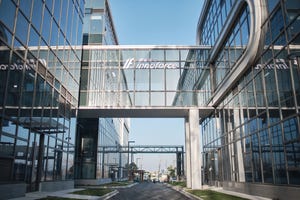
Having internal AAV capabilities gives Tenaya Therapeutics control over its processes, timelines, and costs, but CEO Faraz Ali says it will also likely use third-party manufacturers as pipelines progress.
Fresh from a $106 million Series C funding, South San Francisco-based cell and gene therapy firm Tenaya Therapeutics is establishing a dedicated facility for AAV (adeno-associated virus) manufacturing to support its emerging portfolio of gene therapy products.
“We have leased a 94,000 square-foot space for our new cGMP facility, and we will build out approximately 50% of that space for the initial footprint,” CEO Faraz Ali told BioProcess Insider.

Image: iStock/3D_generator
“We are targeting AAV production for first-in-human studies at the 1000 L scale. The space gives us the ability to purposefully scale-out and to scale-up capacity in a measured way as our pipeline matures and our manufacturing needs evolve.”
The firm will add around 20 production staff initially to a total workforce of around 80, but this will go up as more capacity is added.
According to Ali, the space being leased is a greenfield project, allowing the firm to design the facility to fulfil its specific requirements.
“The facility will use a modular pod design, with each pod designed to comply with the latest FDA compliance expectations per recent pre-approval inspections (PAI) of other AAV gene therapy manufacturing facilities,” he said.
“Using this approach, we will be able to tailor the existing space to meet our needs for manufacturing, laboratory, cold storage, utilities, office, and warehouse space. We have partnered with preferred suppliers in a design/build approach to minimize the time required to bring the facility online. They will use standard product offerings for utility infrastructure to further reduce the time required to construct the entire project.”
Demand and supply
For small and large molecule developers, the use of contract development and manufacturing organizations (CDMOs) has become commonplace over the past 25 years. Outsourcing is not a trend but a reality of drug making.
But as the cell and gene therapy space moves from its infancy to adolescence, companies of all sizes have been weighing up the benefits of an internal manufacturing network. Cell therapy firms such as AdaptImmune and Iovance have vocalized the merits of inhouse manufacturing, while the likes of Pfizer and Astellas have made significant investments in their own gene therapy facilities.
According to Faraz, opting for inhouse production capabilities places his firm at an advantage as – with “more than 1,000 regenerative medicine companies globally running more than 1,200 clinical trials” – the demand for “viral vector manufacturing capacity, know-how, and talent from biopharmaceutical innovators far outstrips the supply by CDMOs.”
CDM-NO!
And with the demand/supply imbalance set to get worse, he argued the lack of flexibility and cost of using a third-party become significant factors in investing inhouse.
“CDMO costs have gone up dramatically over the last decade. This alters the math around ‘make vs. buy’ decisions,” he told us. Meanwhile, “CDMOs can require cGMP commitments 12-18 months in advance of a manufacturing run and have far less flexibility to accommodate the evolving needs and timelines of early-stage companies where the scientific progress is not always predictable.”
Faraz added reliance on a third-party could also lead to product quality and process consistency suffering, citing “several high-profile examples of delayed clinical development and commercial approval of gene/cell therapy products due to FDA concerns with the comparability of manufacturing processes – and therefore product attributes – from one phase of development to the next.”
Most recently, Bristol-Myers Squibb cited an FDA 483 at a facility run by its CDMO Lonza as a factor in the approval delay of CAR-T candidate liso-cel. Third-parties have also contributed to manufacturing and regulatory delays for advanced therapies developed by Autolus and Enzyvant.
“The team at Tenaya Therapeutics saw these trends and felt it was important for us to internalize a cGMP production capability in part to have more control over our costs, our timelines, our manufacturing processes, and our product quality.”
But beyond this, Faraz said Tenaya had several other reasons to make this investment early: Innovation, speed and scale (see accompanying text box).
However, despite laying out the advantages of an inhouse network, Faraz admitted the firm does not view the decision to focus internally as discounting the use of third-parties in the future.
“As part of our strategy, we will likely also utilize CMO capacity and capabilities over time. However, we will be in a much stronger position to partner with CMOs if we have a firm handle on our own production processes, technical know-how, analytics, and Quality Assurance (QA) and QC systems.”
About the Author
You May Also Like

schedl_b_and_w.jpg?width=100&auto=webp&quality=80&disable=upscale)
schedl_b_and_w.jpg?width=400&auto=webp&quality=80&disable=upscale)






